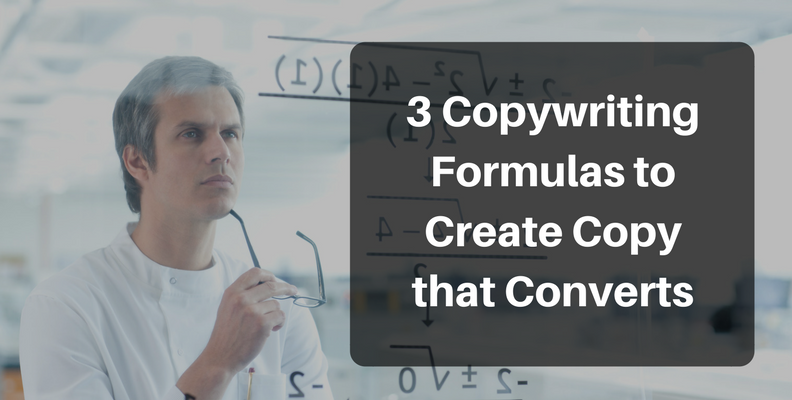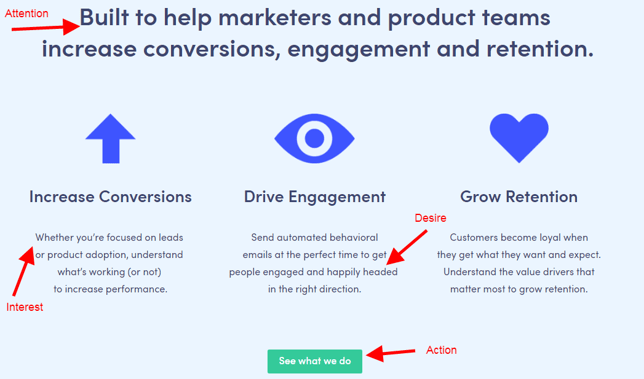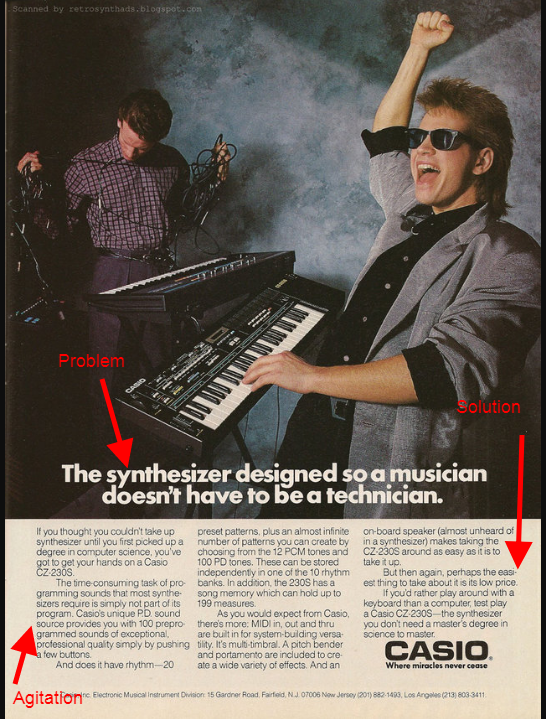
Today's content marketers have a lot on their plates. They're ultimately responsible for a majority of (if not all) text content that goes on a website page. Knowing that, it can get especially difficult to remember all of the essential details that must be included on a specific page.
The smarter content marketers have looked towards copywriting for help, and for good reason. This advertising-focused segment of content marketing is known for its brevity and emphasis on shorter, laser-focused content that achieves specific objectives.
What is Copywriting?
Starting from the late 19th century and working into the early 20th century, copywriting started with department stores that were selling items in brochures and other printed mediums. Copywriting would create stories about certain products that were specially crafted to sell that product.
At the time, this new way to advertise was incredibly effective; it caused more people to buy more products based on what they read in a magazine or other publication. Now, it's evolved from printed and text-based ads to digital content widely accessible through all kinds of devices.
Copywriting and content marketing are very similar and have a lot of overlap. Regardless of that, all content marketers and copywriters must understand that print ads are now completely different from online content.
Important Disclaimer about Copywriting Formulas
It is essential to understand that there is a great number of copywriting formulas for different kinds of content. Joanna Wiebe of CopyHackers created an immense guide to just about all (I'm not kidding) of the different kinds of copywriting formulas.
Of course, these formulas aren't meant for you to half-ass your copy. They're here to help you make sure your content is fulfilling your objective, whether it is to convert readers into leads, provide value for customers or site visitors, or even to create an engaging social post. If you use a copywriting formula without performing research or collecting valuable information on your target audience, your copy will not be effective.
Even more, if you prioritize attention-grabbing headlines and images over the actual copy you create, users are going to leave your website and look somewhere else. In today's world people understand how to access digital content, and that means that grabbing someone's attention is no longer as much of a battle as it was in the age of the magazine.
Do not make the mistake of sacrificing the user experience of your site's visitors for an attention-grabbing phrase or image. If you do, your site traffic will bounce causing you to lose on business opportunities and revenue opportunities.
Remember, copywriting formulas were created to help writers curate and tweak their messaging based upon a defined objective. I've compiled three of my most used copywriting formulas that I use in my content marketing efforts.
1) AIDA -- Attention, Interest, Desire, Action
This formula is one of the most used and commonly known copywriting formulas out there. It's for a variety of content types, from blog posts to landing page content to even emails.
Attention: Bring the convincing and compelling elements of your product, service, or offering to light. You'll want to bring attention to the things that are the most unbelievable, or the parts that will want your target audience to continue reading your content. Remember, your reader is bored with all the other content out there. Give them the short 4-5 words that will really resonate with them.
Interest: Don't just stop with getting your target audience's attention! This is where you continue feeding your audience with fresh information that speaks to the attention-grabbing first part of this formula. You'll be building a bit of hype around your offering, and driving home its value. Remember, do this concisely, or your readers won't be making it much further.
Desire: This is often times the part of this formula that's forgotten. When the 'desire' is forgotten, is your offering really that compelling? Will your audience really want what you're selling? To ensure that you're adequately showcasing desire, make sure that your copy evokes some kind of emotion. Give the features and benefits of your product or service. Prove, in your copy, that what you're offering is "worth it" in the eyes of your site visitors.
Action: Give your readers an understanding of the action they will need to take to get your offering. Simply help them understand how they can get what your trying to give them. Just having a button that says "Click Here" is not good enough. Instead, align the offering with the expectations of your reader.
AIDA is best used when you have some kind of proof offered after the formula. That can be in the form of a client testimonial or even case studies.
Check out the below example of the AIDA copywriting formula on one of Kissmetrics' conversion points.

2) PAS -- Problem, Agitation, Solution
This formula is one of the best ones that content marketers can use for increasing interest or desire for something. To get your visitors interested in you products or services, you need to entice them. You need a brief yet clear headline, bullet points and supporting content, and an image or two. Draw them into your content with PAS.
Problem: What is a significant problem that your target audience is facing? This problem doesn't have to be their most pressing issue, but it is absolutely paramount that you can evoke negative emotions through that problem. Consider how you can speak to specific issues or challenges that they are dealing with for the best results.
Agitation: This is where you agitate the problem to where the reader specifically wants to solve that problem. Make your content intensify the problem or problems that you just mentioned, and highlight the emotions associated with that problem. Even more, you can discredit potential solutions for an added effect. You'll want to agitate your readers until they have a real, visceral reaction, and once that happens, you can present your solution.
Solution: This is where you present the solution to the problem that you've illustrated. Your content should convince how and why your offering solves their problem. Once effectively illustrate the demand for your solution, make sure you provide proof of your solution.
This copywriting formula is effective because it highlights the negatives. People want to avoid pains, challenges, hassles, risks, problems, glitches, and other 'issues.' Instead of framing your content in a positive manner and 'selling' the features and benefits, give people an understanding of what will happen if they don't purchase your solution.
Check out the example of PAS in Casio's old synthesizer ad.

Image credit goes to Thrillist.com.
3) SSS -- Star, Story, Solution
This is more for salesy lead generation pages and is more conceptual in nature. In it, you've got the star of your content, their story, and how they solved a problem. This character-focused formula is great when used for personality brands (like Chubbies) or informational products (like a subscription to the New York Times).
Star: This is your protagonist; your story's good guy, or the main character. You don't have to make your Star a human here. In fact, the Star can be your product or service. Possibly the most essential thing to remember is that you need to shape your Star in a way that enables your reader to easily imagine themselves as the Star.
Story: Once you have an understanding of your star, start shaping their story and do it with brevity. Make sure your story answers specific questions to give readers adequate context on how the Star is challenging, what problems they face, and ultimately how they solved their problem. Remember to tie in emotions for best results.
Solution: This last "s" showcases how the Star solved his or her problems. This is one of the most underrated aspects of this formula, as it can't be done effectively with a short blurb about how "they contacted our company and lived happily ever after." Instead, describe the solution from the Star's perspective. How did the solution make your Star feel? What did other people think about the solution? Include those important details to best connect each of the three parts of this formula.
For an example of effective usage of the SSS formula, check out one of the best print ads ever written. (Spoiler Alert: That print ad is quite sexist, but it does a great job of utilizing all aspects of the formula.)
Content marketing involves a lot of different elements under the digital marketing umbrella. These marketers have to remember SEO elements, company-specific or product-specific content, good writing techniques, hyperlinking strategies, and a hell of a lot more. In fact, I used aspects of AIDA to write this blog post! Utilize these copywriting formulas to make it easier to create copy that converts.
For more tips and strategies to help you create better copy, subscribe to our blog for consistent, expert-level articles on all things related to digital marketing.

